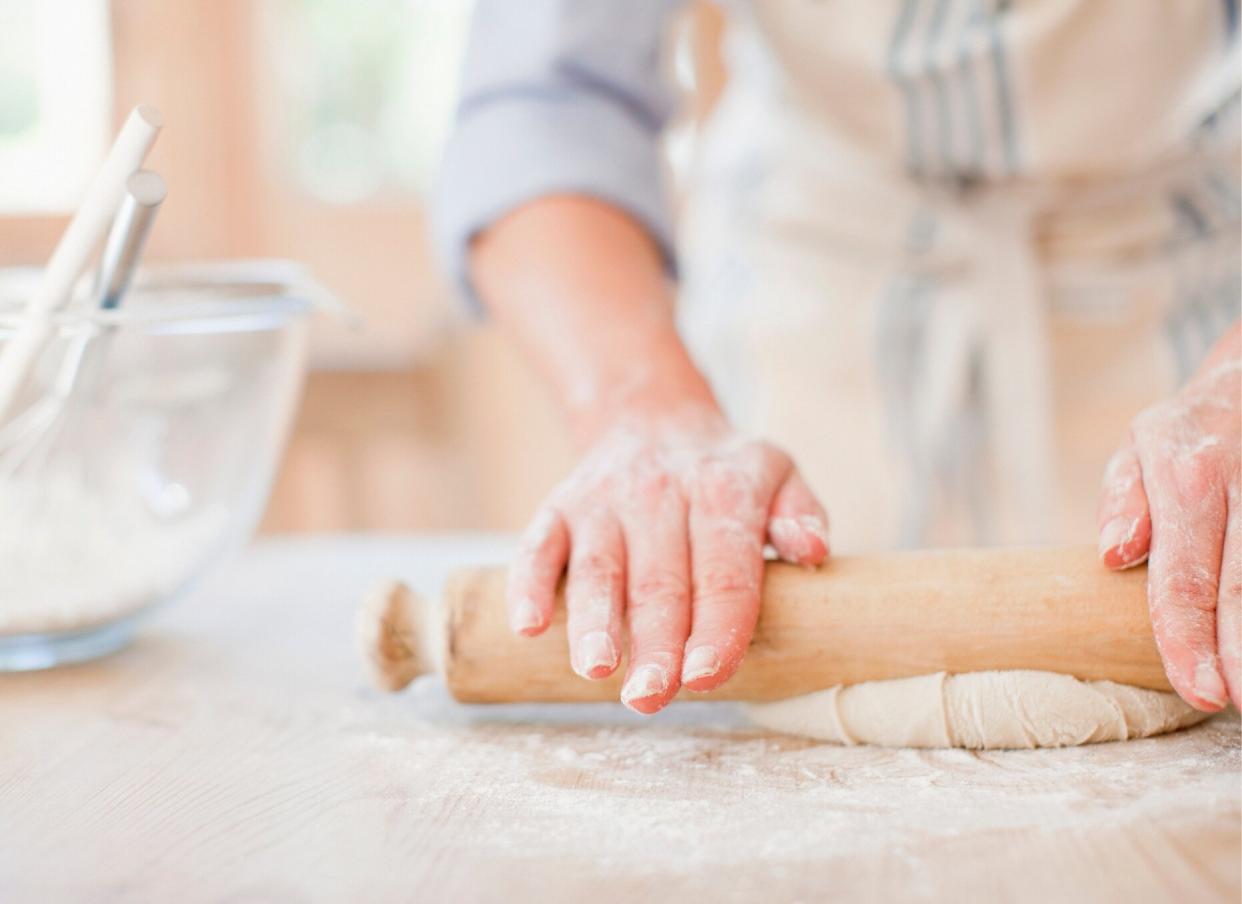Afraid of Making Pie Crust from Scratch? We've Got the Fix

Getty / Tom Merton
If you are the kind of person who only bakes pies when the holidays roll around, chances are right about now you are starting to get that little feeling in the pit of your stomach. Will the pastry be amazing this year, or will the specter of Mary Berry be hovering over your head scolding you about tough rubbery crusts or soggy bottoms?
Here is the problem for the occasional pie baker. Making great pastry is a lot about practice, because most recipes are really just fat, flour and water, and all technique. The difference between great flaky crusts and horrible ones is pretty much all in the handling. And then you need to be able to roll it out without it sticking, cracking, or falling to bits.
Related: 60 Perfect Holiday Pie Recipes
There is no shame in buying a good store-bought crust, but if you want to make yours from scratch but want a little insurance policy there are two things you can do to your current favorite pie crust recipe that will help.
The secret to great homemade pie crust
A little extra sugar and one egg yolk can make your pie crusts sing.
Here's the culinary theory behind it all: These two hacks are going to bridge a gap between pâte brisée (traditional flaky pie crust) and pâte sablée (a sweet crust with both sugar and egg that is traditional for tarts). You are adding just enough sugar and egg to get the benefit of workability in your dough, without the more intense sweetness or crisp bake of a full sablé dough, which doesn't work particularly well for double crust pies.
Related: How to Match Your Pie With the Right Crust
How much sugar should you add to your homemade pie crust recipe?
For starters, if your current recipe contains no sugar, for starters add 1 tablespoon for a one-crust batch, or 2 tablespoons if your recipe makes enough for a double-crust pie. Not only will sugar enhance flavor and browning, but it also helps keep the dough tender, because sugar attracts water. Pie crusts with sugar added will have slightly less flake, since more of the water stays in the dough and does not become steam, but what you lose in flake you gain flavor and flexibility.
Related: Make-Ahead Thanksgiving: Freezer-Friendly Pies
How many egg yolks should you add to your homemade pie crust recipe?
The most important thing to add is an egg yolk. Add the yolk of one large egg for a one-crust pie, two for a double-crust. Yolk adds richness and helps with elasticity because the natural lecithin helps keep the crust pliable. To add yolk to your current recipe, just beat the yolk lightly and add to your dough after the butter has been cut into the dry ingredients, and before you start adding water, since your dough will need less moisture than usual because of the yolk addition.
More tips for a great homemade pie crust
As always, chill your dough well before rolling and again before baking. You can blind bake if your recipe calls for it. And in all baking just keep an eye on the edges because crust with sugar and yolk in it will brown a bit faster and deeper than one without. If needed, cover edges with foil to protect them while baking to ensure your filling cooks properly and the edges of the crust don't burn.

